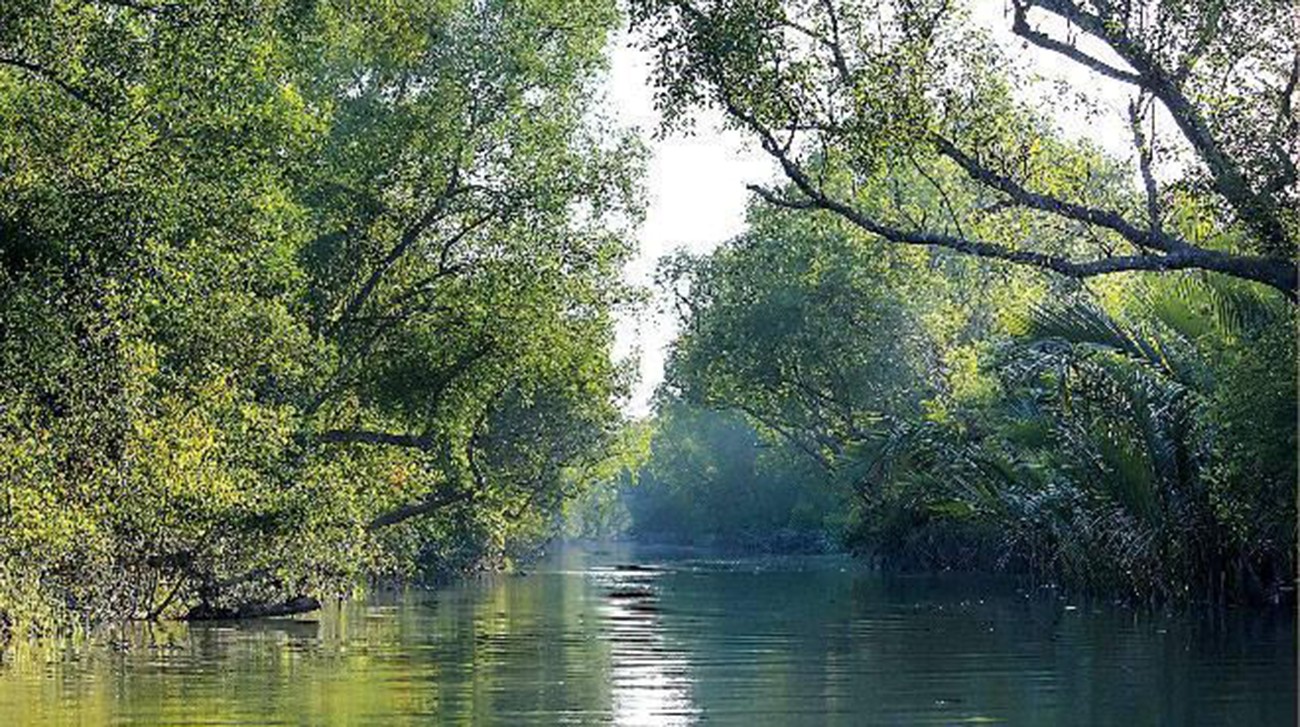Sundarbans the bulwark

Dhaka, 10 June, 2020: The Sundarbans have once again proved to be the key saviour of the country in times of natural calamity as the mangrove forest absorbed the fury of Cyclone Amphan, much as it had done before with similar forces of nature.
The forest is a gift of nature to Bangladesh as it acts like a wall whenever a severe cyclone hits the country, said green campaigners, forest and biodiversity experts, urging the government to halt all kinds of economic and commercial activities in and around the Sundarbans.
It could not be immediately ascertained how much damage the forest had sustained as it absorbed the worst of Amphan.
"We cannot say yet how much the damage could be. But we have evacuated our remote forest offices and brought all our staffers to safer places, knowing the cyclone will leave a heavy blow," said Amir Hossain Chowdhury, the acting Chief Conservator of Forest (CCF).
The acting CCF said they have evacuated all staff from nine offices, including in Kotka, Kochikhali, Shelarchar, Pashakkhali, Baherakhali, Puspakathi, Notabeki, Kachikata, Kawakhali,located near the coast.
"Nearly 60 to 70 staff members are posted in those forest offices. We have brought them to other offices which have better structures," said Chowdhury.
The forest department has also asked all honey collectors who could not return from their excursions to take shelter at nearby forest offices, he said.
The forest department will start assessing damages caused by the cyclone in a day or two.
During Cyclone Sidr in 2007, the forest had suffered severe damage.
The cyclone hit the eastern parts of the forest, especially Chandpai range — which includes Kochikhali, Kotka, Hiron Point, and Dublarchar — leaving a trail of severe devastation. The uprooted trees and destroyed houses on the edge of the forest were reminiscent of the devastation wrought on the area by the cyclone of 1988, sources said.
The forest eventually recovered from the wounds made by cyclones and became green again within a couple of years. The weakened Cyclone Bulbul, which hit last year, did not cause as much damage to the Sundarbans as Sidr and Aila did.
Khasru Chowdhury, who has been visiting the Sundarbans for the last 40 years and working to save tigers, said the forest is acting like a shock absorber.
When asked about the role of the Sundarbans, Dr Reza Khan, eminent wildlife and forest ecology expert, told The Daily Star that the Sundarbans has been saving the country from cyclones as it is working as a wall.
"If the Sundarbans were not there, the entire Khulna Division would be like a desert without any tree or human habitation, because the cyclone would bring salty sea water and destroy all vegetation," said Dr Reza Khan, adding that what the Sundarbans is doing for the country would be impossible to determine in financial terms.
Dr Reza urged the government to stop all kind of economic and commercial interventions in and around the Sundarbans immediately.
"The only intervention the government should continue there is to save the forest," he said.
Sharif Jamil, secretary of Bangladesh Poribesh Andolon, who has been protesting against establishment of coal-fired power plants for a few years, said the Sundarbans has once more proved to be more important than any economic activity in the backdrop of the government's unwillingness to abandon destructive industrial activities in Rampal, Mongla, Taltoli and Kalapara.
When extreme weather comes from the sea, it eclipses even the danger of pandemics like the ongoing Covid-19 as people scamper to take shelter from nature's unbridled fury. Jamil said it was very frustrating to see the people's top priority is the last priority of the government in their development plans.
Bangladesh and India jointly share the unique mangrove forest, with 6,017sqkm in Bangladesh.

